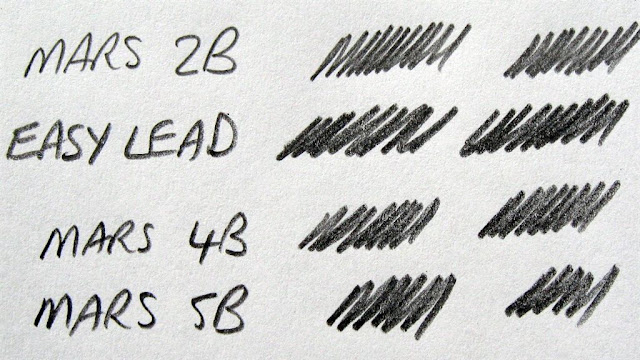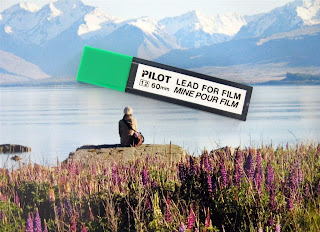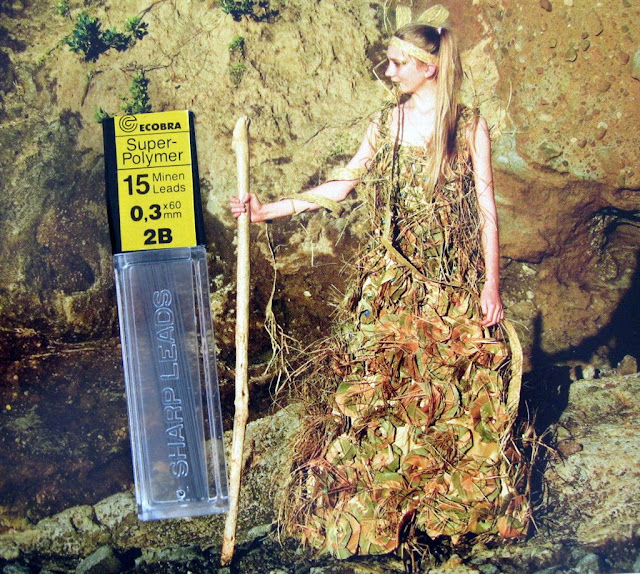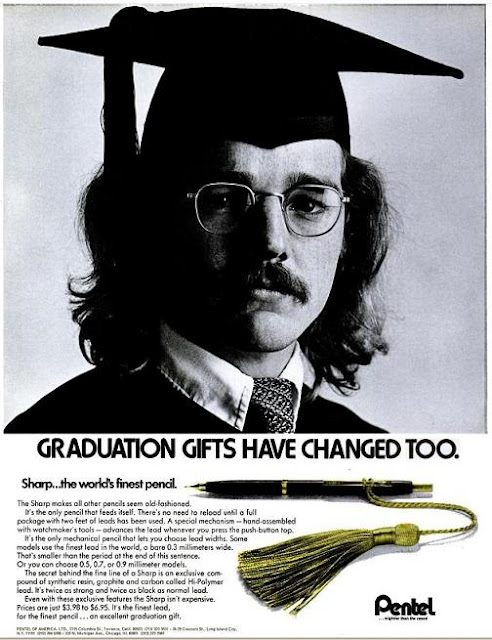Papermate Apex Mechanical Pencil Review
The Papermate Apex mechanical pencil has a got a lot going for it. Firstly, and perhaps most importantly, it is a member of that fairly exclusive club, the ‘Vanishing Points’. I’ve come to the conclusion that vanishing point mechanism pencils don’t actually get much press. Well, certainly not the press that I think they deserve. The Papermate website describes the Apex mechanism as “retractable”. That’s it. One word. One single word to ambiguously describe what is surely the primary marketing feature of the product? A sliding sleeve is retractable too, but that’s not the type of retractability we are talking about here.

Anyway, enough of Papermate’s marketing plans, but it does beg question - what to call pencils with that kind of retractable mechanism? A mechanism where the whole front tip section is retractable back into the barrel. The first push on the top button extends the tip section out and locks it into place. Subsequent lighter clicks then extend the lead like a ‘normal’ mechanical pencil but if you keep pushing past the first pressure stop-point then you unlock the tip and it springs back up inside the body for supreme pocket safety. So, what to call them? I cannot stand calling them ‘double knock’ pencils, the literal translation of the Japanese wording. ‘Double action’, ‘dual action’ and ‘double push’ all seem reasonable and descriptive, and have been used by some manufacturers, but surely ‘vanishing point’ sounds far more interesting and marketable? So, cast your vote on the poll in the sidebar. (The poll is now closed - see
results here)
One problem I do have with vanishing point mechanisms is that many of them are designed so that when retracted the end of the lead sleeve is only just inside the barrel, and you can easily end up with lead sticking out past the end of the barrel.
A problem that some folk have with vanishing point mechanical pencils is that the retractable tip introduces another possible source of lead wobble. The amount of lead wobble you can tolerate obviously depends on your personal requirements. I generally don’t have too many problems with the amount of wobble on vanishing points, and the Papermate Apex is no exception, but there is of course more wobble than on a good quality rigid sliding sleeve or fixed sleeve pencil.
In the hand the Apex is a medium weight pencil and a little top heavy. Well it feels a little top heavy, no doubt thanks to the twist out eraser cartridge, but objective measurement of the balance point doesn’t entirely back me up. The grip is a dimpled rubber piece. The compound is quite hard and doesn’t really move under finger pressure, but at least the compound is reasonably grippy.
The pocket clip is strong chromed steel, quite springy, with ‘Papermate’ and ‘Japan’ stamped into it. The only other markings on the mechanical pencil are ‘Apex’, the lead diameter and the Papermate double-hearts printed on the barrel.
Up at the top end of the pencil we have a twist out eraser. The top of the twist out cartridge has a knurled chromed ring which adds a touch of class to the whole thing. The eraser is one of the thin diameter types, with the eraser core being just under 4mm diameter and having about 28mm of usable length.
The eraser cartridge is also the push top button that activates the lead advance mechanism. Whilst one big click will extend or retract the vanishing point mechanism, ten more modest clicks will get you 6mm of 0.7mm lead. You pull the whole eraser cartridge out of the main body to access the lead refill chamber underneath.

Overall then I’m pretty positive about the Papermate Apex, but somehow this pencil just doesn’t grab me, to me it just doesn’t look right. It’s the grip. The Apex has got some great features like the vanishing point mechanism and the twist out eraser, and it’s a good pencil, but for me, the grip…it’s just such a negative. Obviously many will disagree, but visual styling is a matter of personal taste and that matt black grip as part of a long straight otherwise glossy and metallic barrel…it just doesn’t fit. Maybe if the grip was a different diameter to the body, or contoured, but as just a long matt black dimpled continuation of the line of the barrel, it’s just doesn’t look good to me. Sorry. Anyway, I don’t want to end this review on a negative, so I’ll be positive - if you like the look of the Papermate Apex mechanical pencil, then buy it.
• Best Points – Vanishing point mechanism.
• Not So Good Points – For me, the grip just spoils the whole aesthetic look of the pencil.
• Price Range – Low.
• Does this pencil make it into the Top 5? - No.
Dimensions – Length 136mm, diameter 9mm. Balance point about 65mm up from the tip.











































